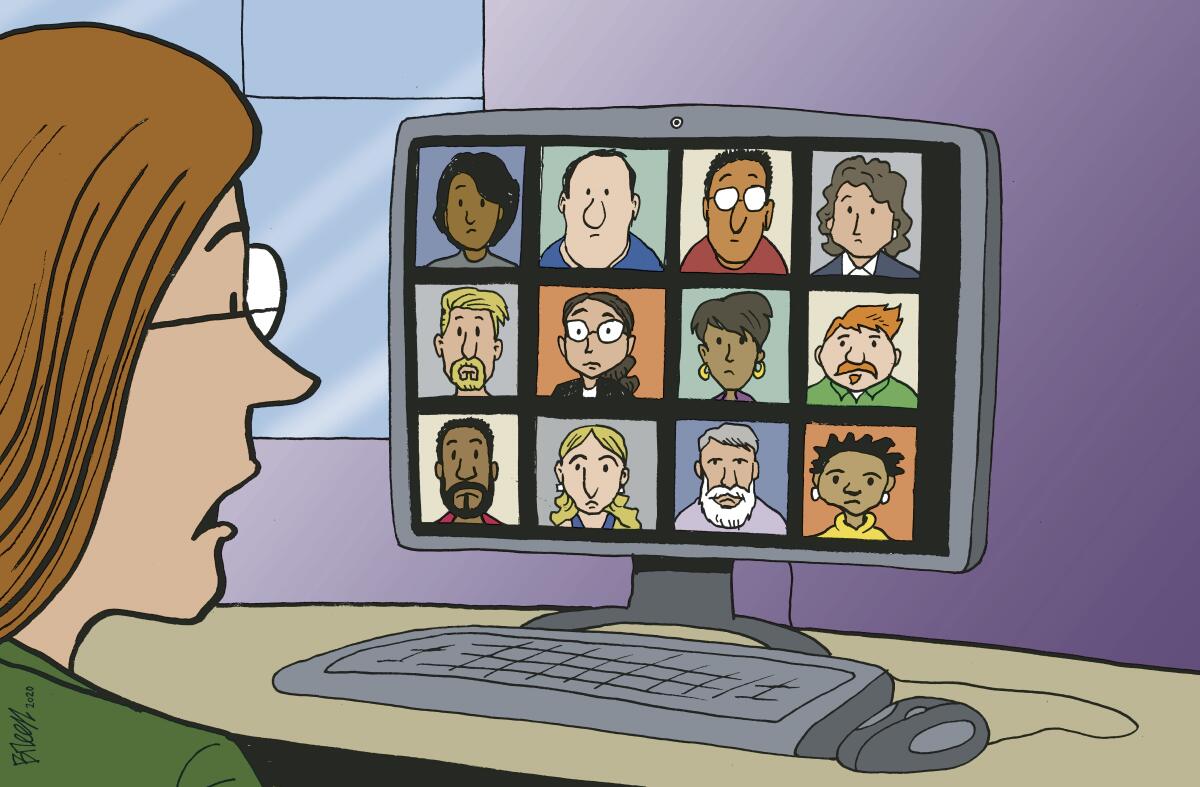Four reasons why Zoom is so exhausting and what you can do about it

One week into stay-at-home orders last year, Jeremy Bailenson was talking to a BBC reporter and had an epiphany.
“Why are we Zooming? There’s no need for us to be on Zoom,” he thought. A phone call would have sufficed.
This kernel of realization became an op-ed article that Bailenson wrote in the Wall Street Journal titled “Why Zoom Meetings Can Exhaust Us.”
Bailenson, a professor of communications and founder of the Virtual Human Interaction Lab at Stanford University, wanted to dig deeper.
So he wrote an academic paper, published Tuesday in Technology, Mind, and Behavior, that boils down four underlying causes of videoconferencing fatigue.
First, the format subjects us to prolonged eye contact at close range.
In the close quarters of an elevator, Bailenson points out in his paper, people avoid making eye contact.
During in-person meetings, they might look at the speaker, but they’re also looking down to take notes or glance elsewhere.
“On Zoom, you’re getting eye contact 100% of the time, regardless of whether you’re speaking,” Bailenson said in an interview.
Our computer screens add to the intensity.
In speaker view on a laptop screen, a person’s face appears about 12 centimeters long, Bailenson said.
That’s the real-world equivalent of someone standing a little more than 1½ feet away from you.
According to Edward T. Hall’s proxemic theory, anything closer than two feet feels like an encroachment on intimate space that’s usually reserved for family and close friends, Bailenson said.
“Yet on work calls,” he said, “we are actually in each other’s intimate space for hours and hours a day.”
The second issue is cognitive overload.
While talking on Zoom, Bailenson notes, we not only give off more cues, for example by nodding emphatically or giving a thumbs-up, but we also receive cues that we don’t always have the context to process.
For example, what looks like side-eye may just be someone glancing at an email notification.
In one of Bailenson’s experiments, researchers used virtual reality so the two students in the study each felt like they were receiving unwavering, undivided eye contact from their teacher 100% of the time.
The students paid more attention, but it came at a cost, Bailenson said.
Even though the gaze in that study was “socially fake” in the same way that people aren’t really staring directly at you over Zoom, it felt “perceptively real,” Bailenson said. “And that causes us to get exhausted.”
Third, Zoom forces us to stare at ourselves.
Here, Bailenson cites research showing that people are more likely to evaluate themselves when they see their reflection, which can be stressful.
And lastly, Zoom limits our mobility in ways that can be stifling.
Some research shows that children retain more of what they’ve learned in math when required to gesture with their hands. And people who walk and talk come up with more creative ideas than people sitting still.
“There’s a fair amount of literature that says moving causes better cognitive function,” Bailenson said.
Our interactions on Zoom have opened up new avenues of research for Bailenson, including how we’re perceived based on our location within the Zoom grid and whether we’re happier when we have our meetings clumped together or spread out.
Collaborating with other researchers, Bailenson came up with a 15-point scale to measure how much general, physical, social, emotional and motivational fatigue people feel from videoconferencing.
Bailenson, however, is quick to add that he’s not anti-Zoom.
Your Zoom or Skype meetings don’t have to look like hostage videos. Here’s what some experts advise.
It’s been an important communication tool throughout the pandemic, he said, and can be made more tolerable with a few adjustments.
For starters, Bailenson recommends hiding the “self-view” function in Zoom. He also suggests minimizing the Zoom window so it’s large enough to see social cues but not so large that it feels like you’re being stared at.
Another tip: Tinker with your Zoom setup so that it feels good, whether that means adjusting the lighting around your camera or using an external webcam or keyboard that allows you to sit farther away.
Finally, Bailenson recommends doing phone or audio-only calls when possible.
“Since we have been talking, I’ve sat in three different chairs,” Bailenson said during the interview, which took place by phone. “On Zoom, you’re just sitting there.”
More to Read
Start your day right
Sign up for Essential California for news, features and recommendations from the L.A. Times and beyond in your inbox six days a week.
You may occasionally receive promotional content from the Los Angeles Times.








